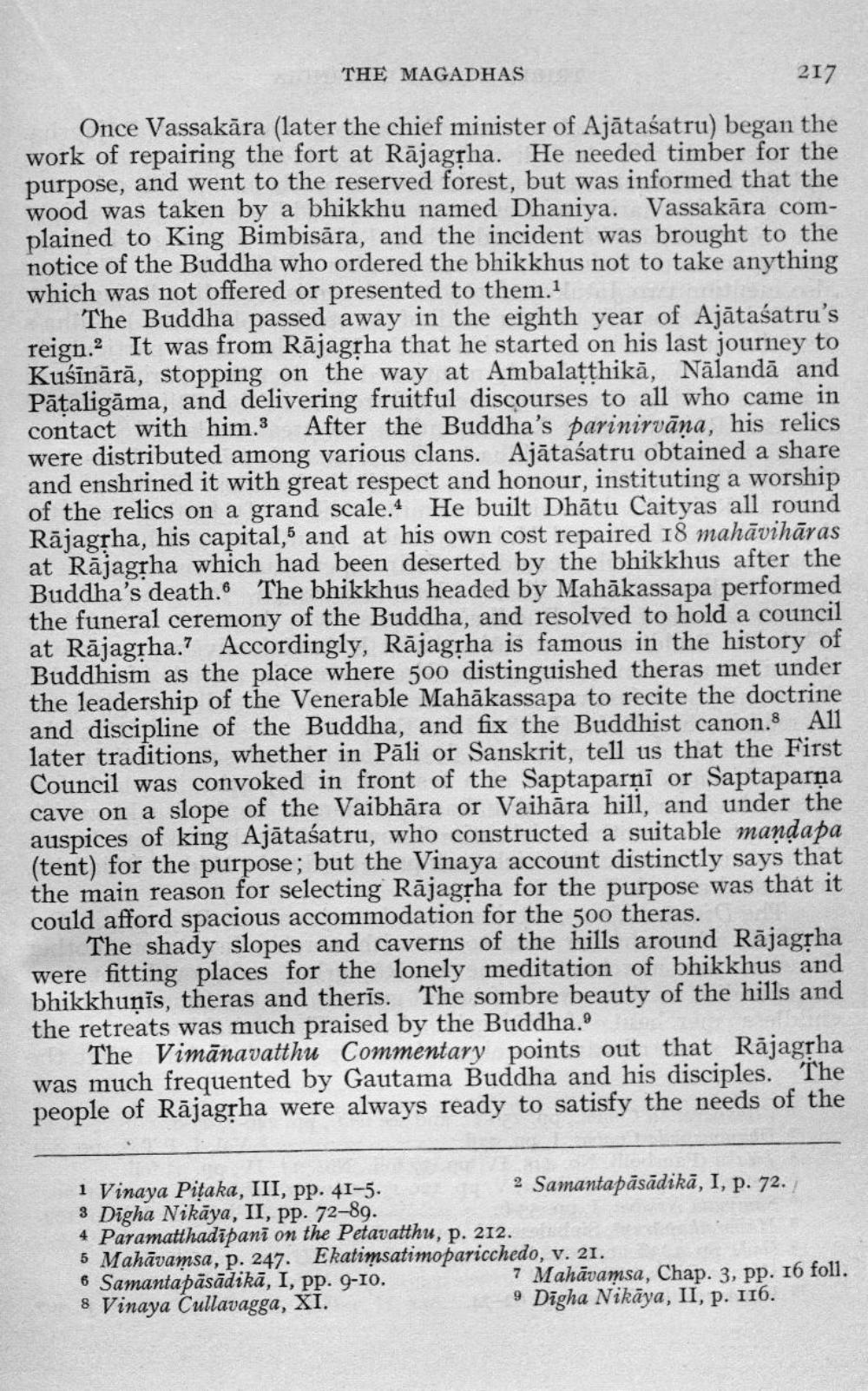________________
THE MAGADHAS
217 Once Vassakāra (later the chief minister of Ajātasatru) began the work of repairing the fort at Rājagrha. He needed timber for the purpose, and went to the reserved forest, but was informed that the wood was taken by a bhikkhu named Dhaniya. Vassakāra complained to King Bimbisāra, and the incident was brought to the notice of the Buddha who ordered the bhikkhus not to take anything which was not offered or presented to them.1
The Buddha passed away in the eighth year of Ajātaśatru's reign. It was from Rājagțha that he started on his last journey to Kuśīnārā, stopping on the way at Ambalatthikā, Nālandā and Pātaligāma, and delivering fruitful discourses to all who came in contact with him. After the Buddha's parinirvāna, his relics were distributed among various clans. Ajātasatru obtained a share and enshrined it with great respect and honour, instituting a worship of the relics on a grand scale. He built Dhātu Caityas all round Rājagsha, his capital,5 and at his own cost repaired 18 mahāvihāras at Rājagrha which had been deserted by the bhikkhus after the Buddha's death. The bhikkhus headed by Mahākassapa performed the funeral ceremony of the Buddha, and resolved to hold a council at Rājagsha.? Accordingly, Rājagrha is famous in the history of Buddhism as the place where 500 distinguished theras met under the leadership of the Venerable Mahākassapa to recite the doctrine and discipline of the Buddha, and fix the Buddhist canon. All later traditions, whether in Pāli or Sanskrit, tell us that the First Council was convoked in front of the Saptaparni or Saptaparna cave on a slope of the Vaibhāra or Vaihāra hill, and under the auspices of king Ajātaśatru, who constructed a suitable mandapa (tent) for the purpose; but the Vinaya account distinctly says that the main reason for selecting Rājagrha for the purpose was that it could afford spacious accommodation for the 500 theras.
The shady slopes and caverns of the hills around Rājagļha were fitting places for the lonely meditation of bhikkhus and bhikkhuņis, theras and therīs. The sombre beauty of the hills and the retreats was much praised by the Buddha.
The Vimānavatthu Commentary points out that Rājagrha was much frequented by Gautama Buddha and his disciples. The people of Rājagļha were always ready to satisfy the needs of the
1 Vinaya Pitaka, III, pp. 41-5.
2 Samantapāsādikā, I, p. 72. / 3 Digha Nikāya, II, pp. 72–89. 4 Paramatthadīpani on the Petavatthu, p. 212. 5 Mahāvamsa, p. 247. Ekatimsatimoparicchedo, v. 21. 6 Samantapāsādikā, I, pp. 9-10.
7 Mahāvamsa, Chap. 3, pp. 16 foll. 8 Vinaya Cullavagga, XI.
9 Digua Nikaya, II, p. II6.




